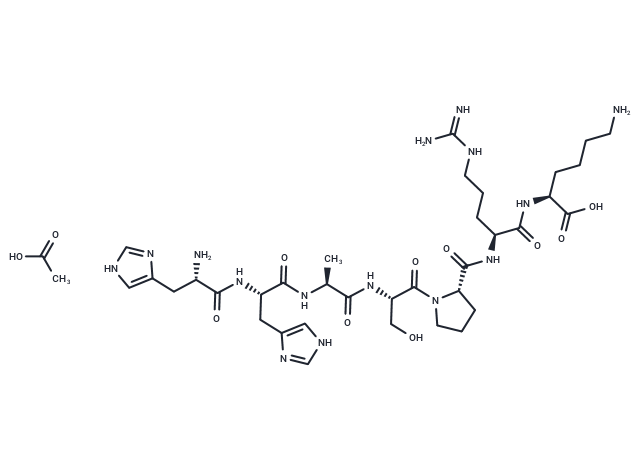Shopping Cart
- Remove All
 Your shopping cart is currently empty
Your shopping cart is currently empty

CDK2 acetate is a member of the eukaryotic S/T protein kinase family and its function is to catalyze the phosphoryl transfer of ATP γ-phosphate to serine or threonine hydroxyl (denoted as S0/T0) in a protein substrate.

| Pack Size | Price | Availability | Quantity |
|---|---|---|---|
| 1 mg | $62 | In Stock | |
| 5 mg | $248 | In Stock | |
| 10 mg | $368 | In Stock | |
| 25 mg | $587 | In Stock | |
| 50 mg | $792 | In Stock | |
| 100 mg | $1,060 | In Stock | |
| 200 mg | $1,430 | In Stock |
| Description | CDK2 acetate is a member of the eukaryotic S/T protein kinase family and its function is to catalyze the phosphoryl transfer of ATP γ-phosphate to serine or threonine hydroxyl (denoted as S0/T0) in a protein substrate. |
| In vitro | CDK2 (Cyclin-dependent kinase 2) is a member of the eukaryotic S/T protein kinase family and its function is to catalyze the phosphoryl transfer of ATP γ-phosphate to serine or threonine hydroxyl (denoted as S0/T0) in a protein substrate. The fully active CDK2 is in complex with HHASPRK (an optimal peptide substrate), namely interactions of CDK2 with peptide substrate and the dynamics of the G-loop. CDK2 participates in eukaryotic cell cycle regulation at the G1/S boundary. CDK2 deregulation has been proved to occur in tumor cells, evoking a strong interest in artificial and native inhibitors. CDK2 activity is tightly regulated by a complex mechanism, including a positive regulatory subunit binding, and phosphorylations at positive and/or negative regulatory sites[1]. |
| Molecular Weight | 891.99 |
| Formula | C37H61N15O11 |
| Smiles | O=C(C)O.O=C(N[C@@H](CC1=CNC=N1)C(N[C@@H](C)C(N[C@@H](CO)C(N2[C@@H](CCC2)C(N[C@@H](CCCNC(N)=N)C(N[C@@H](CCCCN)C(O)=O)=O)=O)=O)=O)=O)[C@H](CC3=CNC=N3)N |
| Relative Density. | no data available |
| Storage | keep away from moisture | Powder: -20°C for 3 years | In solvent: -80°C for 1 year | Shipping with blue ice. |

Copyright © 2015-2025 TargetMol Chemicals Inc. All Rights Reserved.